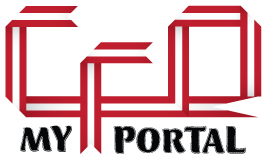In today world, where manufacturing companies are looking to improve their bottom line, it is a must that they manufacture their products in an efficient and cost-effective manner. The point to focus here is that no matter how good your product may be if you can’t manufacture it cheaper than your competition, your business will most likely suffer.
Based on my experience there are following four main areas where we can save money:
- Material
In any manufacturing environment, material costs dominate the overall product cost. To reduce this cost, focus on the ways to purchase materials for less money and find ways to consume less material in manufacturing. Using an effective Material Resource Planning (MRP) system to purchase materials can help in reducing cost. Provide written processes, training, guidance and proper tooling to reduce the amount of material scrapped during production. Deploy lean manufacturing initiatives such as Six Sigma to evaluate opportunities for savings.
- Labour
After the cost of material, labour cost is the biggest cost for most of the manufacturing plants. This means, controlling the labour costs will boost your profits. Logically, there are two ways to reduce labour cost:
- Reduction in the amount paid to factory workers;
- Increase the efficiency of the workers.
Find out ways how can you achieve these objectives of reduction in payments and increasing the efficiency of the workers.
Such as one of the ways to decrease labour costs is to improve the efficiency of experienced labour. Check your process thoroughly and find out redundant or the processes that can be performed by one worker. Eliminate those processes. Reduce the time required to produce an average unit by providing specialized training that allows employees to work at a faster pace. Offer incentives to the employees who can introduce labor-saving techniques into your production facility.
- Overheads
Overheads are the expenses associated with the running of a manufacturing plant, some of the examples of overhead are utilities, supplies, travel and entertainment, and other administrative costs. In order to control the overheads, the first thing to do is after talking to different department heads, set-up budget for each department and monitor it on a weekly/monthly basis. Make sure to use an effective ERP system that is capable of carrying out of a variance analysis such as actual vs budgeted. Utilities can be reduced by having a smart thermostat which can be controlled from a smart device. Another way is using smart lighting, solar water heater and using efficient equipment can reduce your utility expenses. Travel expense can be reduced by telecommuting and supplies cost can be reduced by using less paper. By paying the invoice on time can reduce interest by quite a lot.
- Capital Investment
At some stage, the manufacturing facility needs to spend money to save money. Investing in equipment which is more efficient and reliable can reduce the cost of production in long run. Similarly, machinery that uses less material can also lower costs. However, before investing make sure to do a cost versus benefit analysis and look at NPV and IRR.
My CFO Portal (www.mycfoportal.ca) can provide accounting, bookkeeping, Tax and CFO services to small and medium size business at a very reasonable cost. We have developed a very efficient system which can deliver service to anywhere is Ontario.

